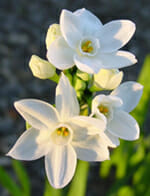
I don’t mind staring at them at all, and it makes hand picking the dried-up fruity pebbles off the cereal bowls a little more bearable. Why do dried fruity pebbles have the same holding power as industrial strength super glue?
Forcing bulbs is a way you can take garden bulbs that grow outside and grow them inside your house in the cold winter months (or any time really.) I realize that in many parts of the country, spring is already here- but just a few days ago we had a big snow storm where I live, so I’ll grasp at any hint of spring I can find.
I especially love forcing bulbs around Easter time. It’s such a beautiful symbol of growth, and rebirth, and when timed just right, it makes a gorgeous, living centerpiece to your holiday table.
Many bulbs (like hyacinth, tulips and the daffodils I’ve done above) require a chilling period, which complicates things a bit and prolongs the process (I’ll write a tutorial about that another time!) but one of the bulbs that doesn’t require this are Paperwhites. In the daffodil family, they grow clusters of little white flowers and they’re the quickest and easiest bulbs to force. They require very little maintenance and don’t even require a green thumb (even Kate could do it!) This is a great project to do with kids too; they will love keeping their eye on these bulbs and cheering at the first sight of roots, tips, and flowers.
You’ll need a container; and it can be any number of things. Glass vases work great. They look really pretty, and the glass makes it easy to monitor the water level. Once the flowers grow tall, having the glass sides helps the flowers from flopping over. Wide, shallow containers, like my blue and white one in the photo work well too. And you can even use baskets and decorative containers if they are lined with a waterproof container on the inside.
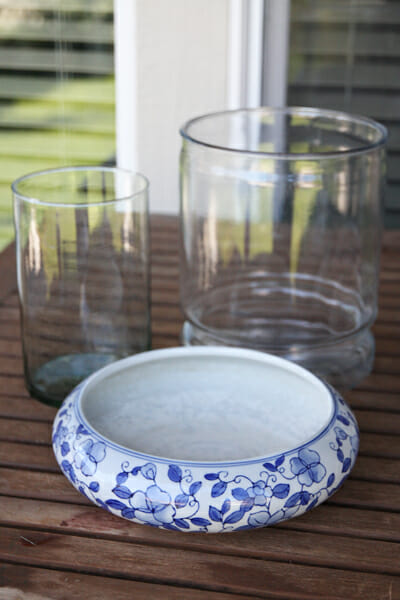
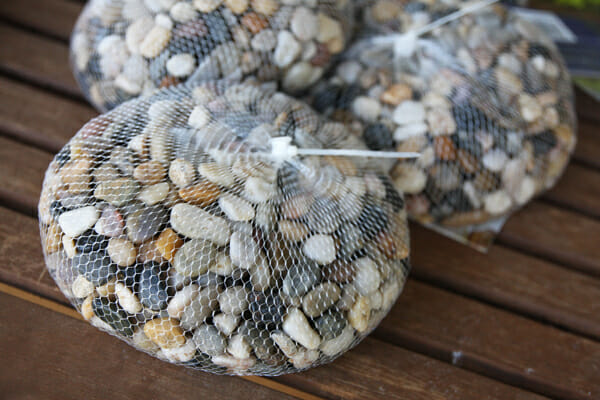
First, fill your container with the planting material. Place the bulbs, root side down, so the pebbles cover about 1/3-1/2 the bulb. The top of the bulb looks similar to an onion, like this:
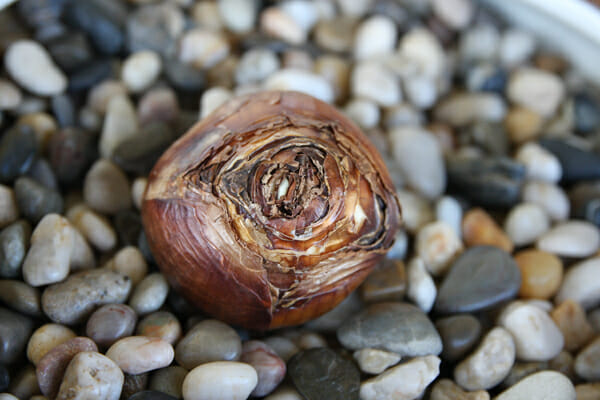
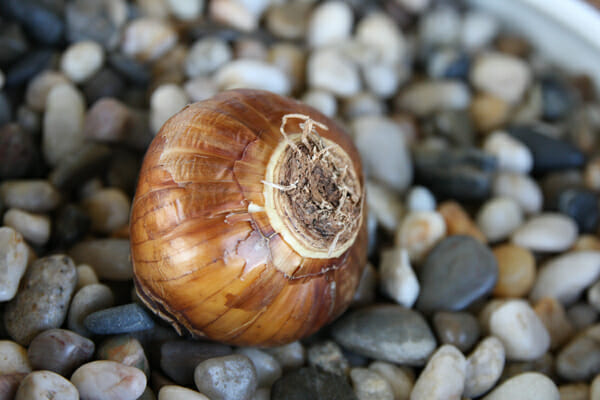
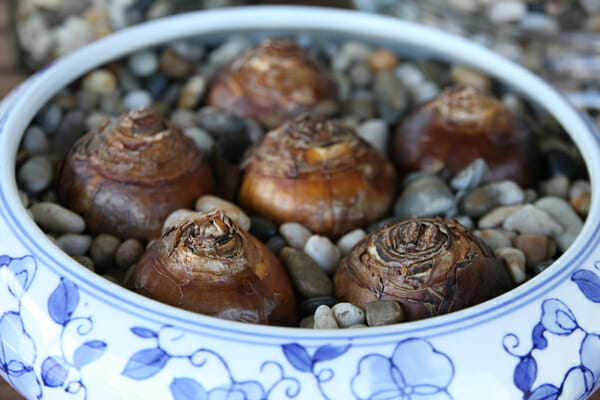
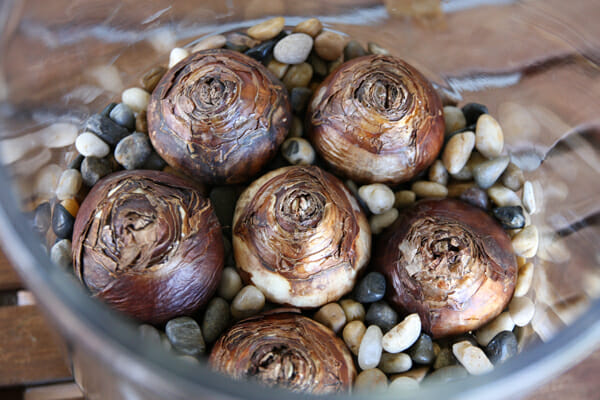
Within a few days, you should notice little roots growing out the bottom. The roots will find their way to the water, growing around the stones and therefore anchoring the bulbs in place.
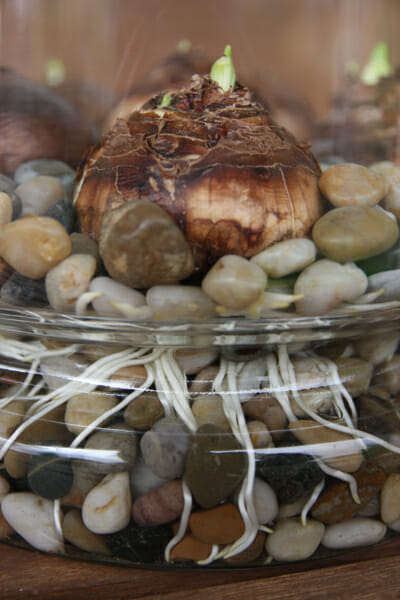
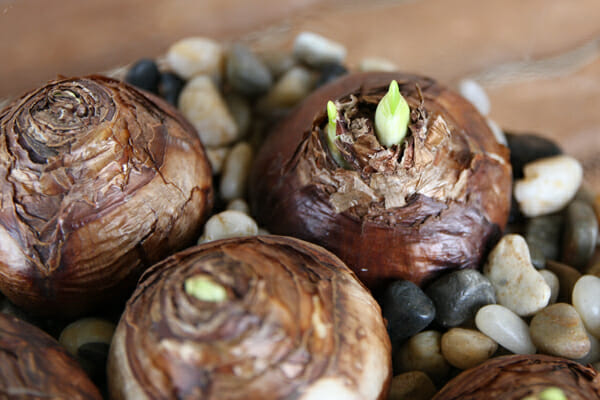
Tie a ribbon around an inexpensive glass vase and they make a great hostess gift. You should see your first blooms within about 4-6 weeks. I forced this particular batch last fall, and somehow I’m missing all of my photos of when they’re actually in bloom! Go figure. It’s okay, Google can save the day. They have little clusters of sweet papery white flowers.
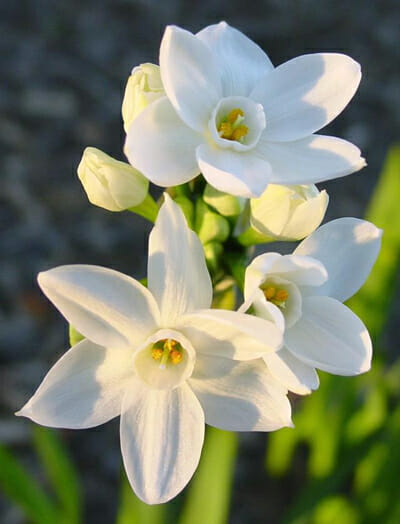
They also have a distinct smell, that people seem to either love, or hate! Once they get tall, they can sometimes get leggy and start to flop over. When they get to that point, I take a pretty ribbon and just tie it around the stems to hold them together.
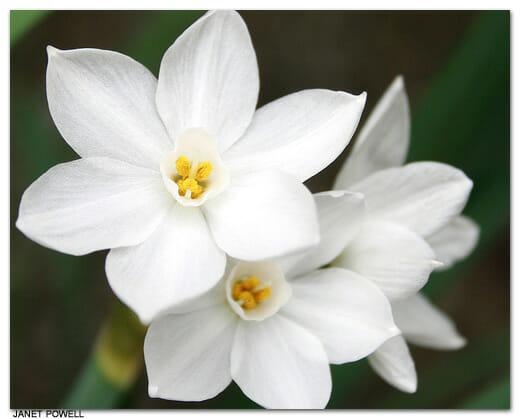
Once paperwhite bulbs are forced, they can’t be forced again. If you live in a warmer garden zone (8-11) they do well outdoors, so you can plant them outside to bloom in future years, but in cooler climates, they won’t do so well so it’s best to just toss the bulbs once they’re finished blooming.
How to Force Paperwhite Narcissus Bulbs Indoors
by ourbestbites.com
Supplies Needed
Paperwhite Bulbs
planting container (glass vase, decorative bowl or dish, metal bucket, etc.)
small pebbles, stones, or marbles
Fill container with pebbles. Place bulbs root-side down in the pebbles so they are set in 1/3-1/2 of the way up the bulb. Add water to container, so the water just barely reaches the bottom of bulbs. Watch for roots to grow within about a week and blooms to appear within 4-6 weeks. Place in a light area, but direct sunlight is not necessary. Monitor water levels and add water so it’s always covering the bottom of the roots. If plants get tall and leggy, tie a ribbon around the stems to secure. Once bulbs are done blooming and flowers are wilted, discard plants, or if you live in a warm climate (zone 8-11) you can remove stems once brown and plant in ground to re-bloom.
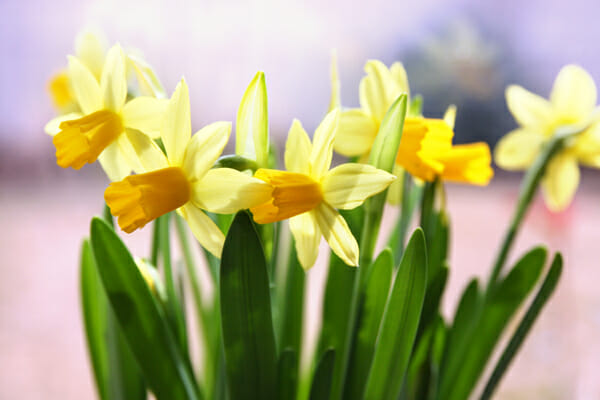
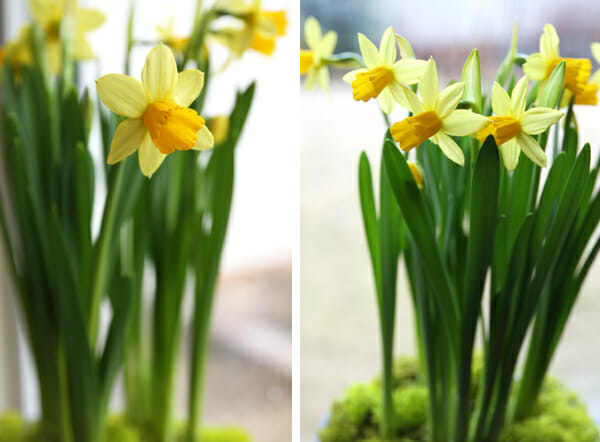
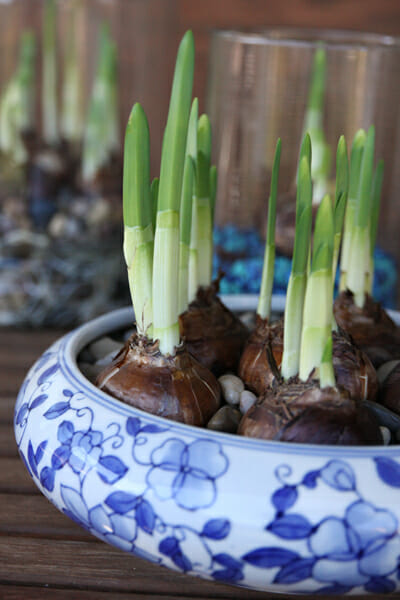








Questions & Reviews
Thank you so very much for sharing this. You nailed it flowers just have a way of brightening my day. Perfect for VT gift. Thank you bunches
I try ,,, and i still wait,, i wish it will grow,
Just grabbed some paper white bulbs at the nursery, but I don’t want them to bloom until January or February when I need some cheer. How do I stop them from sprouting?
Just keep them chilling in the fridge 🙂
I love to do this but have always been curious, why can’t they be forced a second time but they will grow outside?
I have successfully done this with anemone tubers (not quite bulbs in the tulip sense, just brown blobby things) in the exact method I read here! Thanks Sara!
This is my first comment on your blog post! I come to know about your blog post by RemodelAholic. I can say only one thing, nature will come on my desk with force bulbs. 🙂 I’m going to pin it.
I never thought about doing this indoors. Giving this a try next year. I have some bulbs that need dividing anyway, so digging them up will be great!
JoAnn
sweetpepperrose.blogspot.com
Love this post. I’m totally going to force some bulbs. I like forcing people to do things, but sometimes I get some real resistance from people. Plants might be better. Less people to be mad at me.
Also…If you like Hawaii. I have a Hibiscus Plant I got for mothers day from a tropical green house. It blooms everyday all year! It makes me super happy, especially in the winter.
So excited! My order of bulbs just arrived! Will be planting tomorrow! Thanks for this post
I wacked off my outside daffodils about two years ago before they wilted and died. Stupid, I now know. This past fall I tried replanting and splitting some of the bulbs along with feeding with some bone meal. So far I see the greens again but no blooms. Warm winter in VA. Any idea if they’ll ever come back or how, or are they just being dormant for a few years due to my shocking them? Also looking forward to your tutorial on forcing tulips/hyacinth as I love bulbs!
Bethany, sometimes it just takes a few seasons for them to regenerate. It takes a LOT of energy to flower (more than it does to grow the stems) so they might just be working their way back to full health 😉